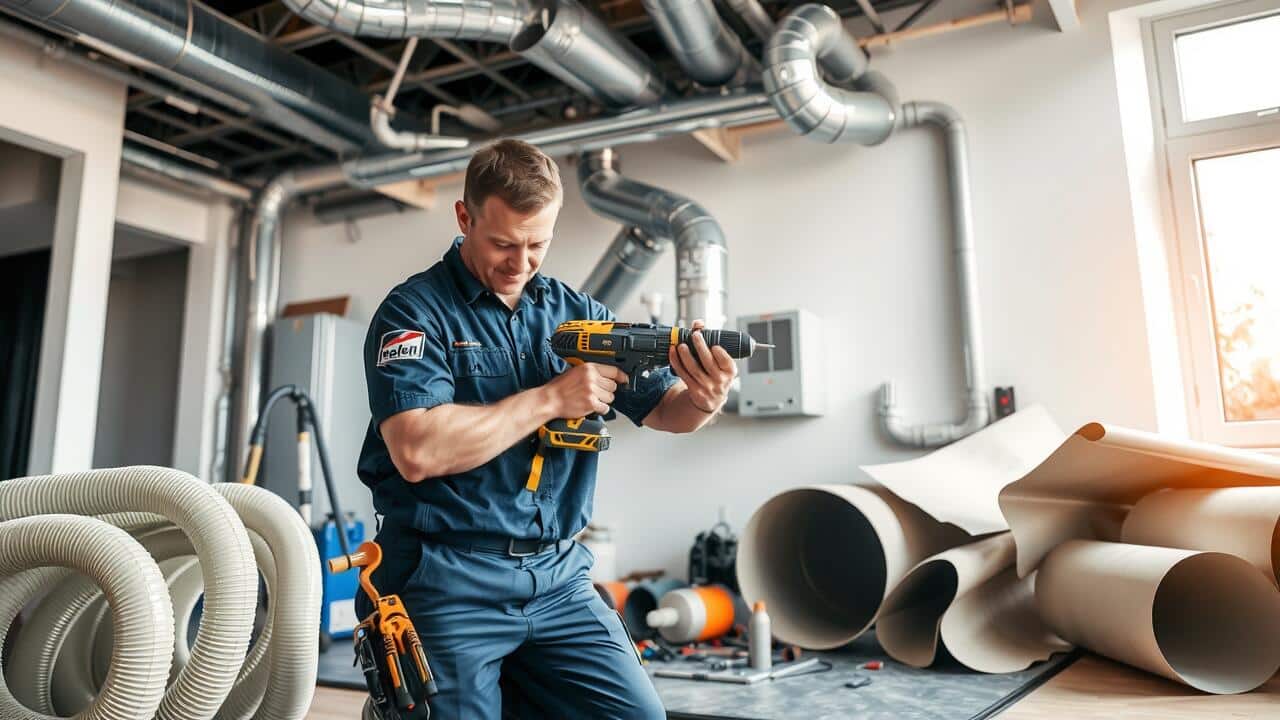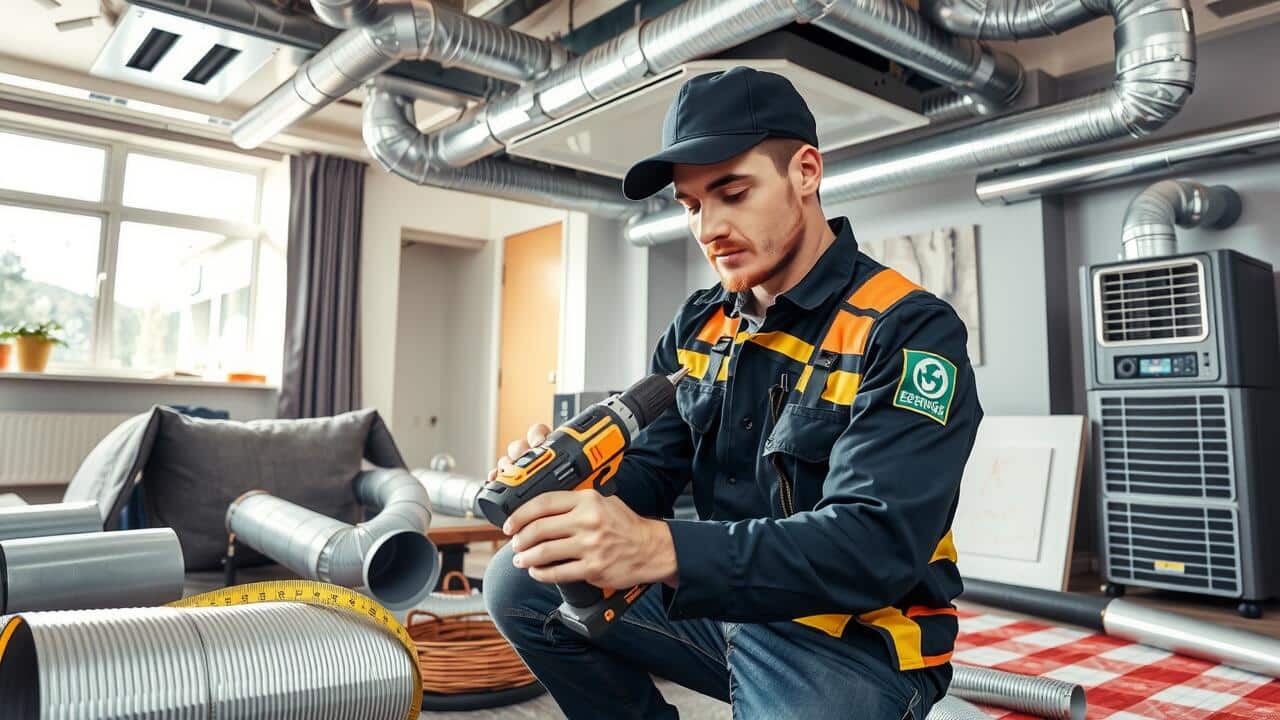
Table Of Contents
Energy Efficiency Considerations
When considering air duct installation in any home, energy efficiency emerges as a crucial factor. Properly designed and installed ductwork optimizes airflow, allowing HVAC systems to operate at peak performance. This efficiency not only enhances comfort levels within the home but also minimizes energy waste. As a result, homeowners can enjoy reduced energy bills and a lower carbon footprint.
Additionally, factors such as insulation, sealant quality, and system design play significant roles in the overall energy efficiency of the ductwork. For instance, well-insulated ducts maintain temperature better, preventing the loss of heated or cooled air. This attention to detail during air duct installation in new or existing structures can lead to substantial long-term savings for homeowners.
Impact of Duct Sealing on Overall Costs
Duct sealing plays a crucial role in optimizing the efficiency and effectiveness of your HVAC system. When air ducts have leaks or gaps, they can lead to significant energy loss, causing your heating and cooling systems to work harder than necessary. This added strain can not only increase your monthly energy bills but also shorten the lifespan of your HVAC system. By investing in proper sealing during Air Duct Installation in your home, you can minimize these losses and create a more content living environment.
The upfront costs associated with duct sealing may seem daunting, but they often pay off in the long term. Reducing air leaks ensures that the conditioned air reaches the intended spaces in your home, leading to better temperature regulation. Homeowners can expect to see a reduction in their utility bills, with savings accumulating over the years. Those who prioritize quality duct sealing during Air Duct Installation in their projects often experience enhanced comfort and lower maintenance costs for their heating and cooling equipment.
Additional Expenses to Consider
When planning for Air Duct Installation in a new or existing home, homeowners should be prepared for various additional expenses that may arise during the process. Beyond the basic costs of materials and labor, expenses like insulation for the ductwork can significantly impact the overall budget. Insulating ducts helps improve energy efficiency by minimizing heat loss, and investing in high-quality insulation contributes to better long-term performance.
Another important expense to consider involves permit and inspection fees, which vary based on local regulations. Many municipalities require permits before commencing any ductwork installation to ensure compliance with building codes. These fees can add to the overall project cost, yet they facilitate a smoother installation process and ensure safety standards are met. Homeowners should factor these expenses into their budget when planning an Air Duct Installation in order to avoid unexpected financial surprises.
Permit and Inspection Fees
When planning for air duct installation in your home, it is essential to consider the potential costs associated with permits and inspection fees. Many local governments require permits for new ductwork installations to ensure compliance with building codes. These permits can vary significantly in cost depending on the region and the complexity of the project. Failure to obtain the necessary permits can result in fines or complications down the line.
In addition to the initial permit fees, homeowners may also incur costs for inspections that ensure the installation meets safety and efficiency standards. An inspector will typically examine the work to confirm that it complies with established regulations. These inspections add an extra layer of costs but contribute to the assurance that the ductwork operates effectively. Budgeting for these expenses upfront can help avoid unexpected financial burdens later.
Benefits of Investing in Quality Ductwork
Investing in quality ductwork offers significant benefits for homeowners seeking efficient heating and cooling solutions. Properly installed and well-maintained ductwork ensures optimal airflow throughout the home. This enhances the efficiency of HVAC systems, leading to consistent temperatures in every room. Homeowners can experience increased comfort levels while reducing energy consumption.
Air Duct Installation in a home featuring high-quality materials often results in lower long-term energy costs. When ductwork fits seamlessly and has effective sealing, it minimizes energy loss. This contributes to not only the lifespan of the HVAC system but also to lower monthly energy bills. High-quality ducts can lead to better indoor air quality by reducing the risk of dust, allergens, and other pollutants accumulating in the system.
Long-term Savings on Energy Bills
Investing in quality ductwork during an air duct installation in your home can yield significant long-term savings on energy bills. Properly designed and installed duct systems enhance airflow and improve HVAC efficiency. When ducts are sealed and insulated correctly, heating and cooling systems can operate more effectively, leading to decreased energy consumption over time.
In addition, energy-efficient ductwork helps to maintain consistent indoor temperatures, reducing the need for frequent adjustments or running systems longer than necessary. Homeowners often notice a reduction in utility expenses as less energy is wasted through leaks or poorly designed airflow paths. By prioritizing efficient air duct installation in their homes, consumers can enjoy both immediate comfort and financial benefits in the long run.
FAQS
What is the average cost to install ductwork in a home?
The average cost of installing ductwork in a home typically ranges from $1,500 to $5,000, depending on the size of the home and the complexity of the installation.
Are there additional costs associated with ductwork installation?
Yes, additional costs may include permit and inspection fees, duct sealing, and any necessary modifications to existing HVAC systems.
How does duct sealing impact overall installation costs?
Duct sealing can increase the overall installation costs, but it is an important step in ensuring energy efficiency, which can lead to long-term savings on energy bills.
What factors influence the cost of ductwork installation?
Factors influencing the cost include the size and layout of the home, the type of materials used, labor costs, and any necessary permits or inspections.
Will investing in quality ductwork result in long-term savings?
Yes, investing in quality ductwork can lead to long-term savings on energy bills, as it improves energy efficiency and helps maintain consistent heating and cooling throughout your home.

